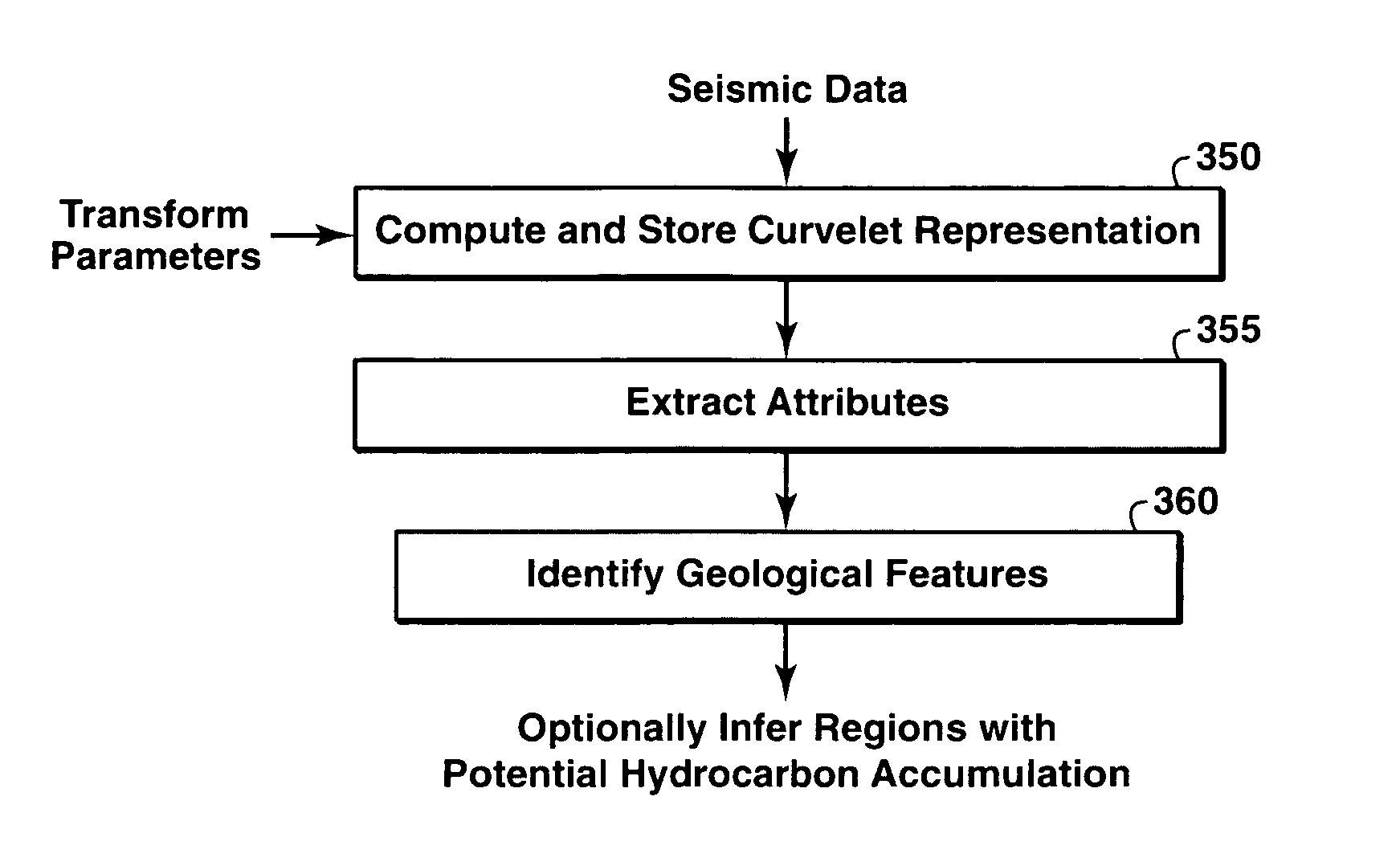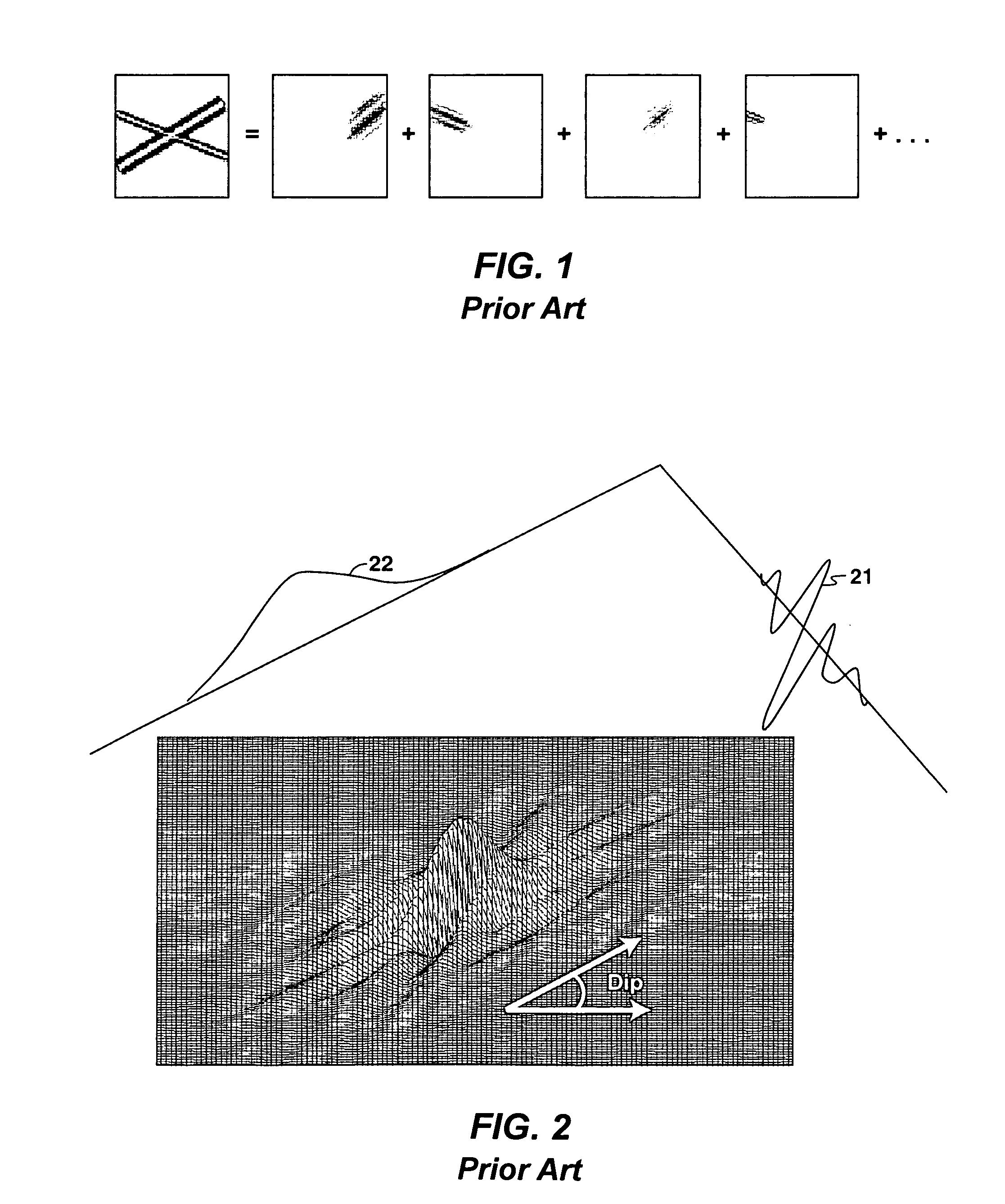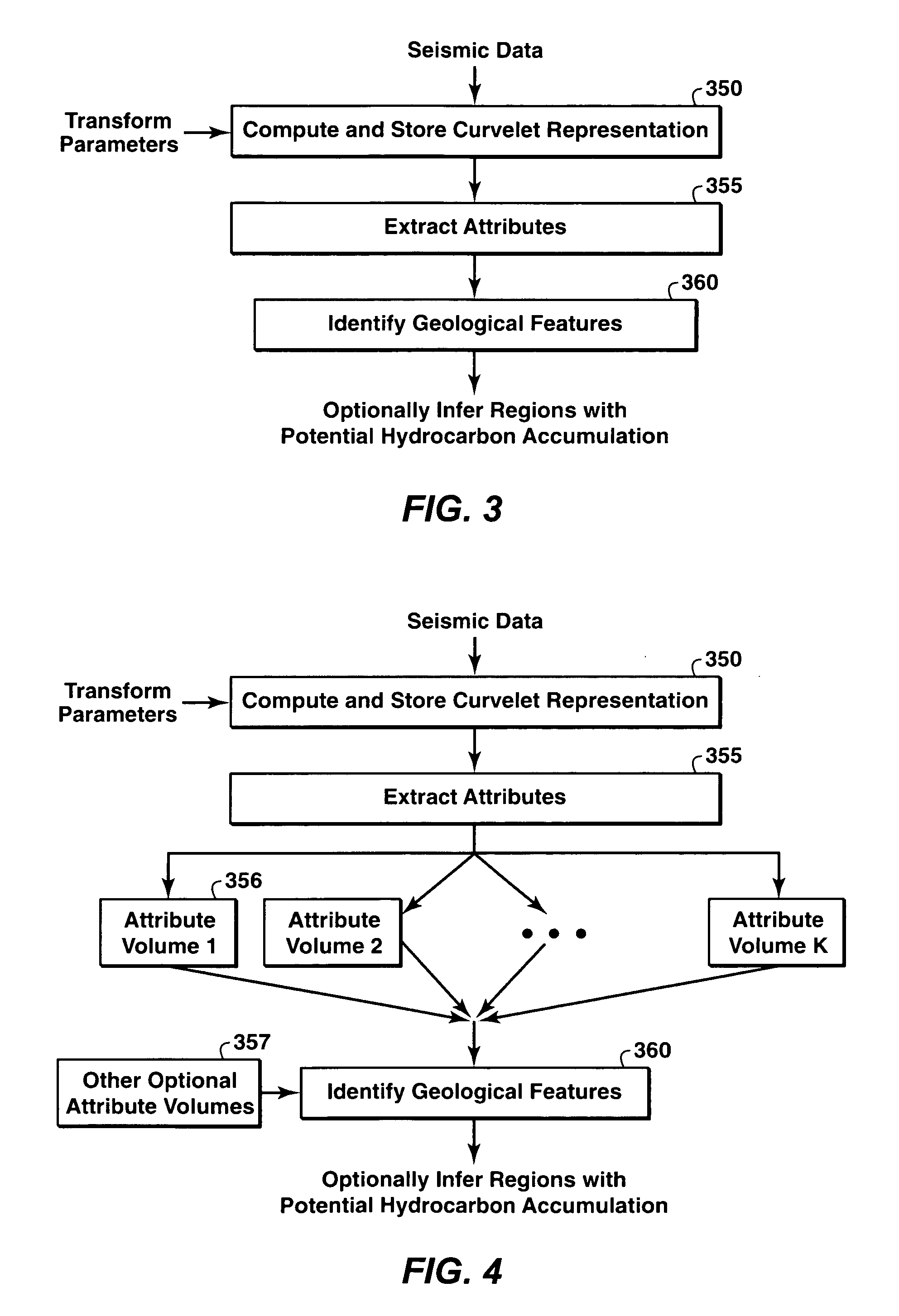Geologic Features From Curvelet Based Seismic Attributes
a technology of seismic attributes and geologic features, applied in the field of geophysical prospecting, can solve the problems of inability to capture critical attribute interdependencies, conventional techniques suffer from fundamental limitations, and conventionally generated attribute volumes can contain a lot of redundant information
- Summary
- Abstract
- Description
- Claims
- Application Information
AI Technical Summary
Benefits of technology
Problems solved by technology
Method used
Image
Examples
Embodiment Construction
[0055]The present invention uses a recently developed mathematical data representation known as the curvelet transform (Candes et al., “Methods for performing fast discrete curvelet transforms of data,” U.S. Patent Application Publication US 2007 / 0038691 (2007); and Candès and Donoho, “Curvelets—A Surprisingly Effective Nonadaptive Representation for Objects with Edges,”Curve and Surface Fitting:Saint-Malo 99, pgs 105-120, L. L. Schumaker et al. (ed's), Vanderbilt University Press, Nashville, Tenn. (2000)) to calculate novel attributes in a fully consistent multi-trace approach spanning multiple spatial dimensions and frequencies. Using this approach, a given seismic data volume is represented as a weighted sum of curvelet functions. The combination of this data representation and application of consistent algorithms to jointly calculate important novel attributes while preserving their interdependencies (e.g., dips at specific frequencies) forms the basis of the present invention. ...
PUM
 Login to View More
Login to View More Abstract
Description
Claims
Application Information
 Login to View More
Login to View More - R&D
- Intellectual Property
- Life Sciences
- Materials
- Tech Scout
- Unparalleled Data Quality
- Higher Quality Content
- 60% Fewer Hallucinations
Browse by: Latest US Patents, China's latest patents, Technical Efficacy Thesaurus, Application Domain, Technology Topic, Popular Technical Reports.
© 2025 PatSnap. All rights reserved.Legal|Privacy policy|Modern Slavery Act Transparency Statement|Sitemap|About US| Contact US: help@patsnap.com



